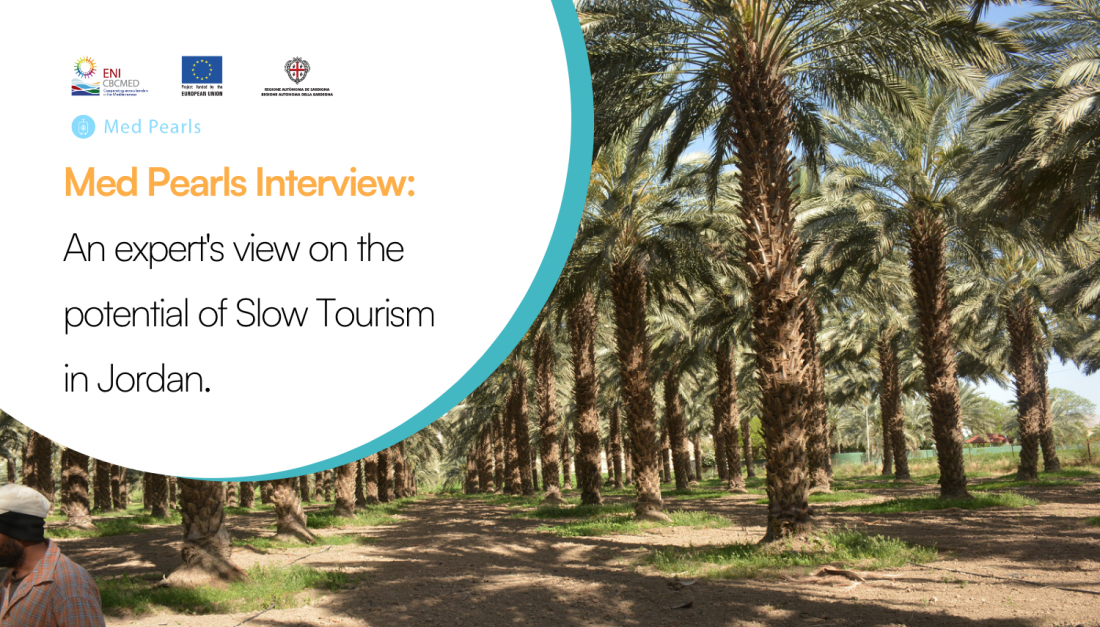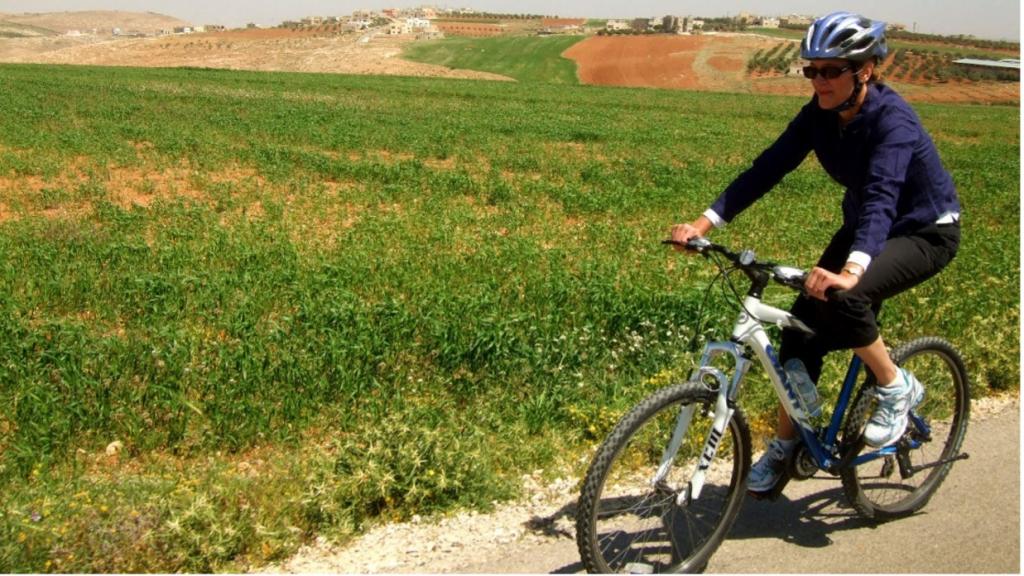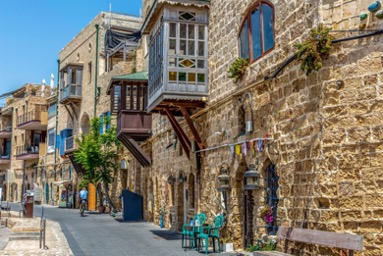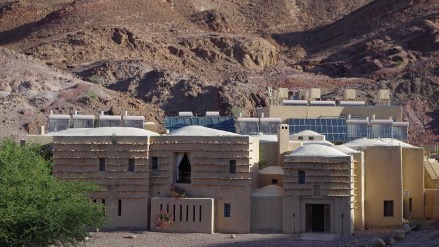The potential of Slow Tourism in Jordan. A Med Pearls interview with sustainable tourism expert Lina Al-Khaled

Lina Al-Khaled is passionate multilingual tourism professional with a master's degree in international tourism and over 20 years’ experience in working with tourism sector in Jordan - both private, public and donor organisations. A strong believer in sustainable tourism, her experience ranged from working with tour operators on the MICE segment, with government as tourism marketing and investment promotion specialist, in addition to being part of the Economic Modernisation Vision – Jordan 2033. Lina’s lengthy experience in project management, business development, strategic planning, research, training, and facilitation has helped her recently assume leading roles with the Jordan Inbound Tour Operators Association (JITOA) as Executive Director, and currently leading a project focused on Adventure tourism. Lina is GSTC certified and is a certified coach and auditor for Travelife.
Join us in this interview where we will find more on her views of Jordan as a sustainable and slow tourism destination.
MP: Can you see potential for slow tourism in Jordan and how?
Lina: There is definitely potential for slow tourism in Jordan. Jordan is a small country that offers a big array of activities and experiences in the different fields of tourism such as cultural, historical, religious, sports, adventure, etc. However due to its small size, travel organizers try to maximize visitors’ exposure by covering areas from north to south in just a few days. As a result, they rush without really experiencing each location in a meaningful way, which leads to minimal benefit for local communities, increases negative environmental footprint and lessens economic benefit for the destination in general. Slow tourism can help positively reverse this effect.
To achieve this, it is necessary to educate tour operators and promotion agencies on all available products, services and experiences in the various locations in Jordan which will enable them develop programs and itineraries that are slower, more responsible and more sustainable.

MP: Do you see Jordan’s infrastructure suitable for slow tourism activities?
Lina: Certainly, there are locations that are readier than others, and accessibility to some is easier than to others, but in general Jordan has enough to offer in every tourism location that allows visitors to spend a good full day at least. For example, the capital Amman offers a variety of historical and cultural sites, art galleries, museums, local cuisine, unique neighborhoods that are worth 2-3 days stay in Amman as opposed to the classical half day tour of Amman. If we take Madaba as another example, you will find that most tours to Madaba are offered for just a few hours in the morning focusing on the tourism center, before heading to Mt. Nebo, Dead Sea or the south. Whereas Madaba as a governorate has enough attractions for a full day visit or even a one-night stay including soft adventure options, community interactions, mosaic art and crafts activities, agrotourism, carpet weaving among other. The same applies to most other tourism centres.
MP: What is needed to develop slow tourism in Jordan?
Lina: We need better transport infrastructure within big cities and between different governorates that are adequate for tourists use and allow for other than private transport options, to increase shared transfers and lessen CO2 emissions. We also need to provide tourists and tour organizers with more information about the different activities, experiences and service providers within a destination. Today there is a lot of digital content that needs to be streamlined to give the tourists easy and clear options. There is also a need to introduce sustainability concepts and practices to ensure a higher quality offering which leads to an increased length of stay, higher spending and a slower pace.


MP: How can local communities in the pilot areas benefit from slow tourism?
Lina: Slow tourism is defined as an opposite to mass tourism, with a deeper and more meaningful connection between tourists and locals at a destination, with longer stays and a more relaxed appreciation of places, leading to a more fulfilling experience. Therefore, as tourists spend more time in any one destination, normally off the mass tracks, they are given the chance to get to know the local communities better through longer engagement in different activities, talks and discussions, trying the local ways. This brings direct and indirect benefits to the host communities.

MP: Lastly, what are the benefits of adding this new concept to Jordan’s tourism map?
Lina: Slow tourism is one of several growing tourism trends that form the sustainable bunch, including eco-tourism, soft adventures, green tourism, agrotourism, community tourism, etc. All of them care for the environment and providing benefits to local communities. Jordan is perceived as a rising sustainable destination. There are more sustainable products and experiences on offer, there is more government attention to it, private operators and service providers are trying to adopt different practices that set them on the path to sustainability. In 2018, Jordan launched the Meaningful Travel Map which included a number of products and experiences that operate in a sustainable manner. Today there are even more sustainable activities that are offered to travelers to Jordan and there is a rising number of international travellers who are looking exactly for that, and they are willing to pay more to ensure that they travel with a good impact, which presents a great opportunity for Jordan.
Check regularly: www.enicbcmed.eu/projects/med-pearls
And our social media:
@MedPearlsProj - Med Pearls Project (Facebook) - medpearlsproject (Instagram)









